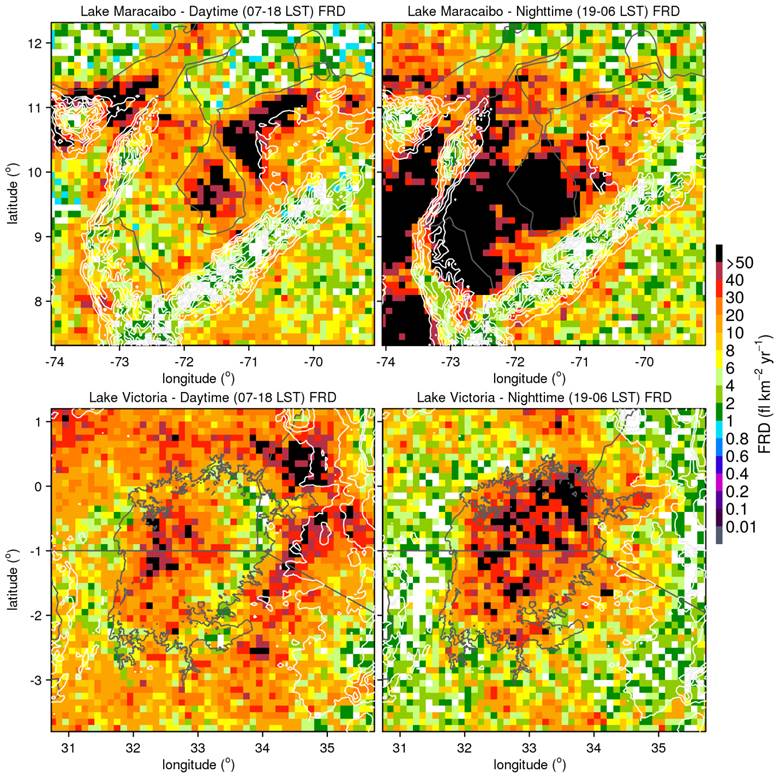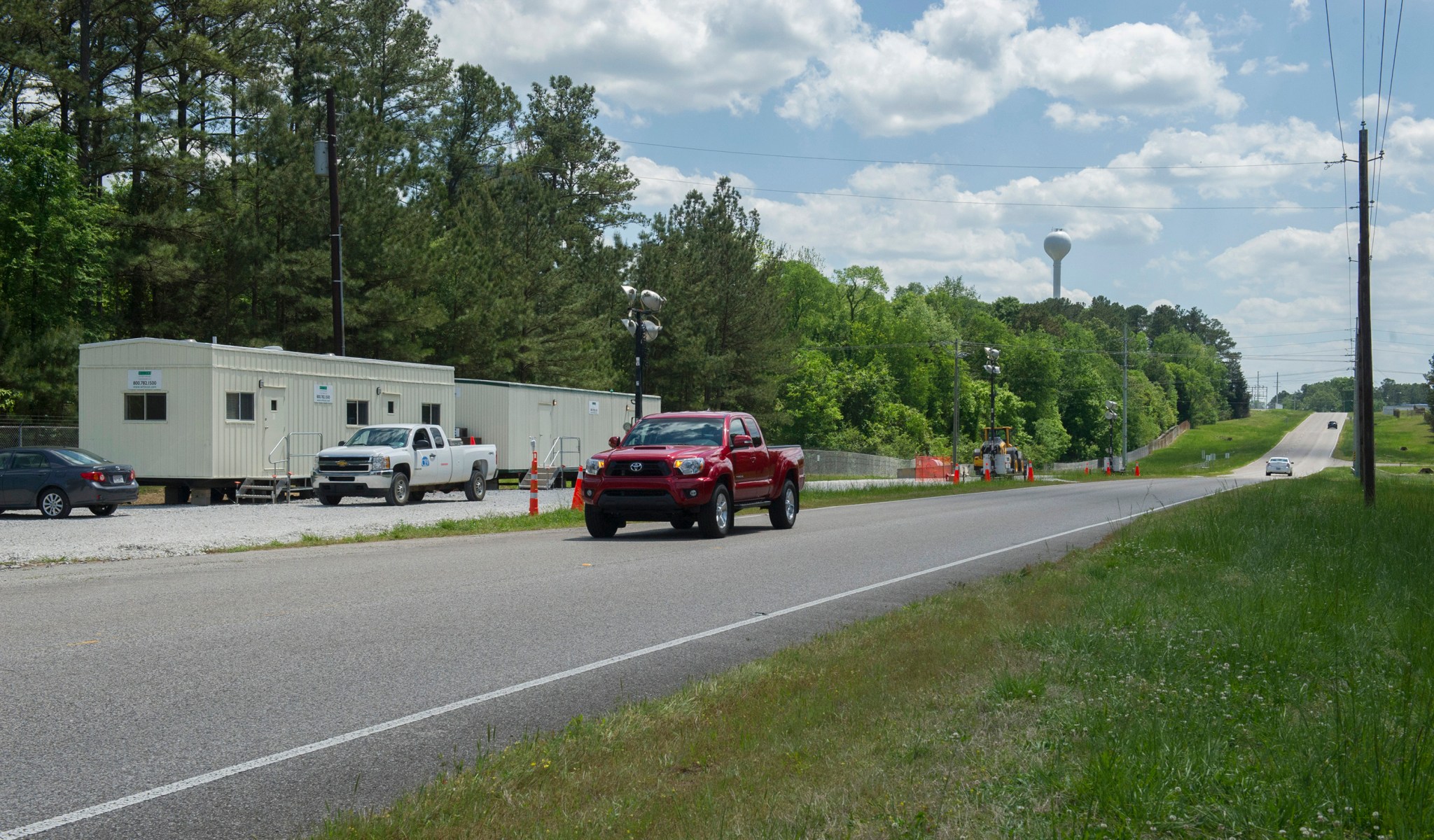In This Week’s Star
- Date Set for Second SLS Booster Qualification Ground Test
- NASA Helps Forecast Zika Risk
- Marshall Center Simulates Solar and Space Environment to Further Exploration
- ‘Russian Doll’ Galaxy Clusters Reveal Information About Dark Energy
- Earth’s New Lightning Capital Revealed
- Army Cleanup of World War II Munitions Buried at Redstone Arsenal Begins with NASA
- Two Marshall Teams Receive NASA ‘Lean Forward; Fail Smart’ Awards
- This Week in NASA History: LAGEOS-1 Satellite Launches — May 4, 1976
- Marshall Team’s Research of Zika Virus Featured on ‘This Week @NASA’
- Obituaries
Date Set for Second SLS Booster Qualification Ground Test
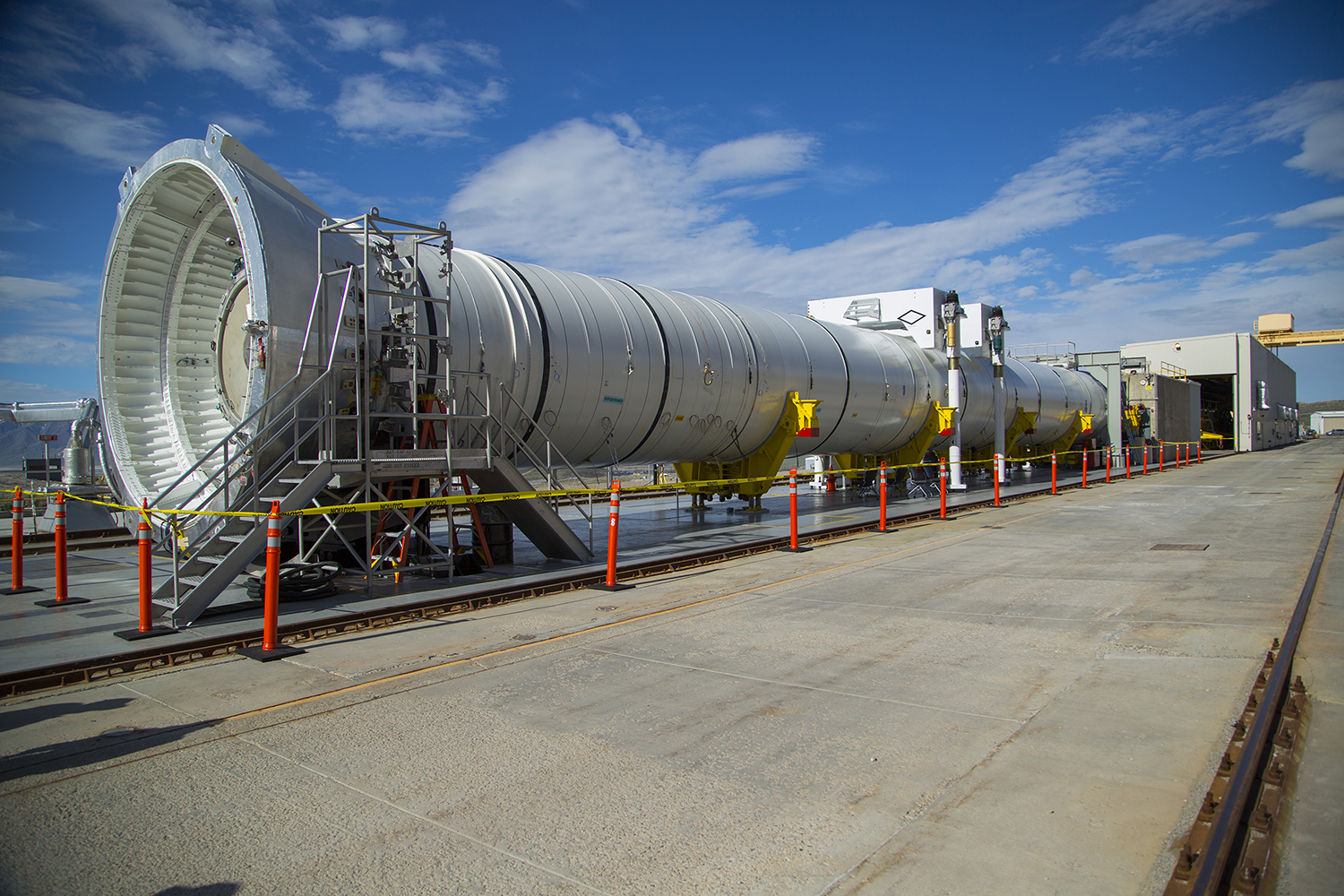
A full-scale, test version of the booster for NASA’s new rocket, the Space Launch System, will fire up for the second of two qualification ground tests June 28 at prime contractor Orbital ATK’s test facility in Promontory, Utah. The test will provide NASA with critical data to support booster qualification for flight. The first, full-scale booster qualification ground test was successfully completed in March 2015, which demonstrated acceptable performance of the booster design at high-temperature conditions. The second test will measure the booster’s performance at a cold motor conditioning target of 40 degrees Fahrenheit — which is the colder end of its accepted propellant temperature range. Testing at the thermal extremes experienced by the booster on the launch pad is important to understand the effect of the temperature range on the ballistic performance of the propellant. When completed, two five-segment boosters and four RS-25 main engines will power the world’s most powerful rocket, with the Orion spacecraft atop, to achieve human exploration to deep-space destinations, including our journey to Mars. (Orbital ATK)
NASA Helps Forecast Zika Risk
NASA is assisting public health officials, scientists and communities to better understand Zika virus and try to limit the spread of the disease it causes.
Scientists at the NASA’s Marshall Space Flight Center have partnered with the National Center for Atmospheric Research in Boulder, Colorado, and other institutions to forecast the potential spread of Zika virus in the United States.
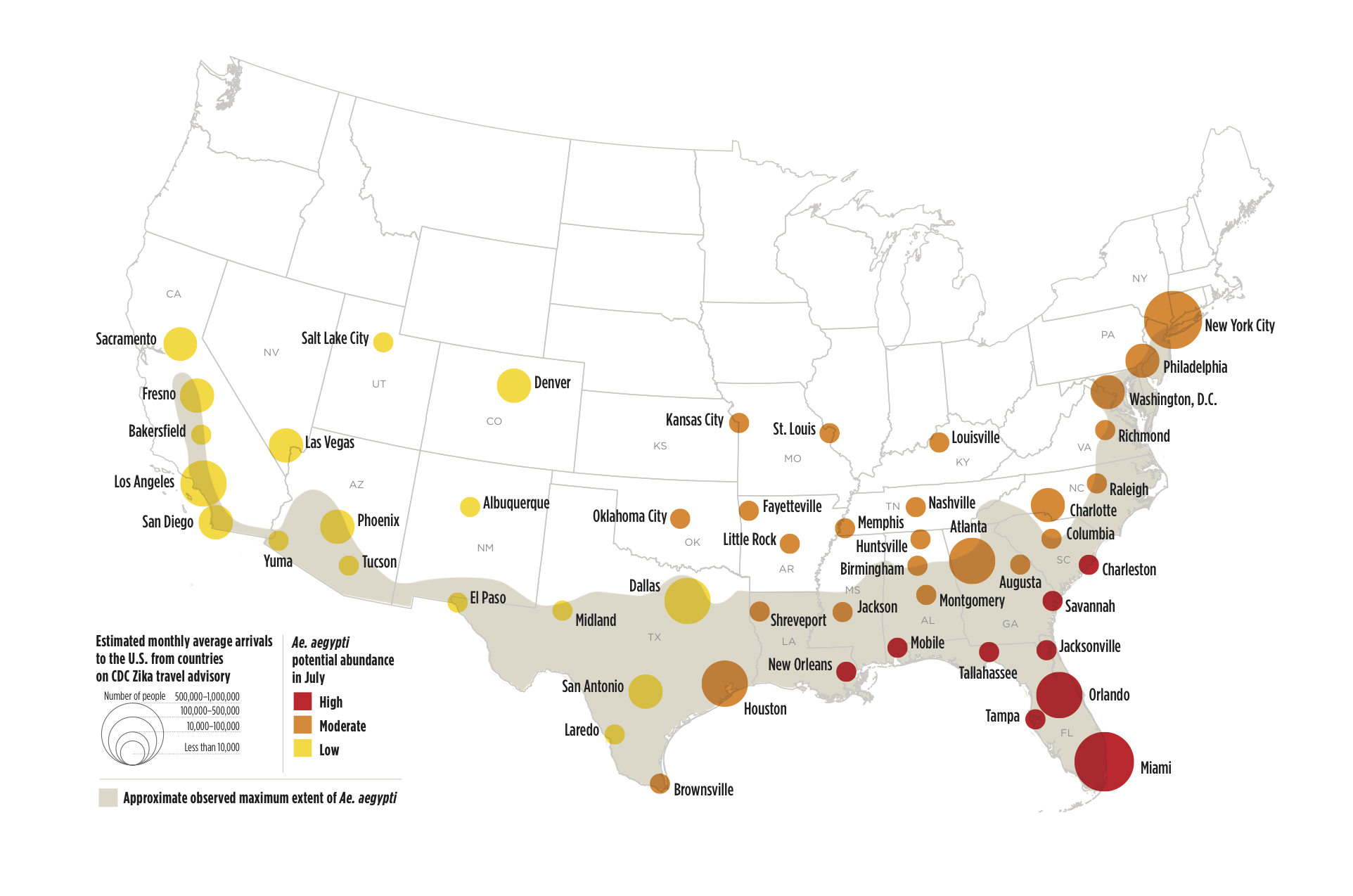
The research team looked at key factors — including temperature, rainfall and socioeconomic factors — that contribute to the spread of Zika virus to understand where and when a potential outbreak may occur. Their final product, a Zika risk map, can help government agencies and health organizations better prepare for possible disease outbreaks related to the spread of the virus. The researchers described their findings in the peer-reviewed journal PLOS Current Outbreaks.
“This information can help public health officials effectively target resources to fight the disease and control its spread,” said Dale Quattrochi, NASA senior research scientist at Marshall.
To determine the potential risk in the mainland United States, Cory Morin, a NASA postdoctoral program fellow with Marshall’s Earth Science Office, Quattrochi and their colleagues applied methodology being employed in their current vector-borne disease project to potentially identify and predict the spread of Zika in 50 cities across the United States in or near the known range of the species. The team has studied this mosquito species for years, because it also transmits the dengue and chikungunya viruses.
The research team found that the Aedes aegypti mosquito, which is spreading the virus, will likely increase in number across much of the southern and eastern United States as the weather warms across those regions in the coming months. Summertime weather conditions are favorable for populations of the mosquito along the East Coast as far north as New York City and across the southern tier of the country as far west as Phoenix and Los Angeles.
“The results generally confirmed many of our suspicions about the relative risk of Zika virus transmission in the United States, said Morin. “However, there were some surprises, such as the northern extent of Aedes aegypti potential survival during the summer months. This suggests that the mosquito can potentially survive in these locations if introduced during certain seasons, even if it hasn’t or can’t become fully established.”
While the virus is not new, its presence in the Americas is. Officials in Brazil reported the first case of human infection in the region last spring. Since then, it has spread throughout South and Central America, and the Caribbean. No locally transmitted Zika cases from mosquitoes have been reported in the continental United States, but cases have been reported in travelers returning from areas where Zika virus is present and in U.S. territories. As Zika virus continues to spread, the number of cases among travelers visiting or returning to the continental United States is likely to increase.
“Knowledge is one of the most effective barriers to disease transmission and can alleviate unnecessary concern,” Morin added. “By identifying the key risk factors and producing forecasts of disease transmission, we can enable citizens to take effective actions that will greatly reduce their risk of disease.
Over the past three decades, NASA has partnered with various world health organizations to use remotely sensed observations to help develop predictive models for the spread of vector-borne diseases such as malaria, plague, yellow fever, West Nile virus, lyme disease, Rift Valley fever and onchocerciasis, or river blindness.
NASA is also part of the Office of Science and Technology Policy’s National Science and Technology Task Force on Science and Technology for Zika Vector Control, which includes partners at the Centers for Disease Control and Prevention and other federal agencies.
This research was supported by the National Institutes of Health and NASA. Funding was also provided by the Marshall Space Flight Center Innovation Fund. The National Science Foundation sponsors the National Center for Atmospheric Research.
To learn more about NASA Earth Science, click here.
Marshall Center Simulates Solar and Space Environment to Further Exploration
By Kenneth Kesner
Inside inconspicuous Building 4605 at NASA’s Marshall Space Flight Center, Todd Schneider is preparing to switch on the sun.
He moves surely in a laboratory crowded by computers and instruments, along short alleys of racks and gear that surround the High Intensity Solar Environment Test system. The heavy steel door on the HISET chamber is a doorway to space: This is the only place on Earth where spacecraft systems and materials can, at the same time, be subjected to the vacuum, temperatures, solar photons and to the electrons and protons of solar winds like they will encounter in space.

“Space doesn’t just throw one thing at you at a time and let you deal with it,” says Schneider, a physicist in the Environmental Effects Branch of Marshall’s Materials and Processes laboratory. “Space throws heat, it throws cold, it throws radiation, UV, plasma and more, all at one time. And there are synergistic effects.”
Today, he and his team are preparing HISET for an upcoming test.
“Turn on master power,” he says into a handheld radio, and someone in a nearby control room throws the switch. The hum of three power supplies begins rising in the lab, along with the whoosh of cooling fans and rushing air. Each is connected to a pressurized xenon arc lamp.
Schneider stands at a computer behind a smoked gray polycarbonate shield on the side of the metal “cage” holding the lights. He makes few keystrokes, then, with the click of a mouse on the screen, there is a loud “CRACK!” and a brilliant flash as electricity is sent to the arc lamps. Another crackle and flash, and then another, and the HISET chamber suddenly seems almost to disappear into the intense, continuous brightness.
HISET’s door is outfitted with thick glass ports to let in light from the arc lamps or other sources. Researchers can place a test object inside the 4-by-8-foot, cryogenically cooled vacuum chamber, seal it and then focus carefully controlled “sunlight” and charged particles on the object as though it were in orbit around Earth, or Mercury, or Mars; as though it were traveling near the dim, cold edge of the solar system or nearing the blazing corona of the sun itself.
“Our team is all about simulating the space environment on the ground,” says Schneider, shutting down the lights. He is the principal investigator for HISET, which was created in part to test components of a Solar Wind Electrons Alphas and Protons sensor package for NASA’s Solar Probe Plus. That mission, planned for launch in 2018, will send a spacecraft closer to the sun than ever before — within about 3.9 million miles.
HISET’s unique capabilities are already being put to many other uses, including materials testing for the Lightweight Integrated Solar Array and Transceiver project at Marshall. LISA-T is a thin-film solar cell and antenna structure that would be stowed for launch and deployed in orbit to provide power and communication for small satellites without the need for solar tracking systems.
On the same day Schneider was working with HISET, a plasma chamber was being set up elsewhere in the building to test tether-plasma interactions for the Heliopause Electrostatic Rapid Transit System, also in development at Marshall. HERTS is a propellant-less concept that uses solar wind and an array of charged wires extending 20 kilometers (nearly 12.5 miles) outward from a spacecraft for propulsion.
The NASA space environment expertise assembled here also tests metals and materials used on the International Space Station, and is used by the Department of Defense and other federal agencies; the Smithsonian Astrophysical Laboratory and other research organizations; and for commercial aerospace interests, such as makers of communications or other satellites. Schneider says that at any given time as much as half their testing is for commercial customers.
“This is a one-stop shop for a whole suite of research,” he says. “There is a wide, wide array of test capabilities here within a five-block radius.”
Kenneth Kesner, an ASRC Federal/Analytical Services employee, supports the Office of Strategic Analysis & Communications.
‘Russian Doll’ Galaxy Clusters Reveal Information About Dark Energy
Astronomers have used data from NASA’s Chandra X-ray Observatory, European Space Agency’s Planck and a large list of optical telescopes to develop a powerful new method for investigating dark energy, the mysterious energy that is currently driving the accelerating expansion of the universe.
The technique takes advantage of the observation that the outer reaches of galaxy clusters, the largest structures in the universe held together by gravity, show similarity in their X-ray emission profiles and sizes. More massive clusters are simply scaled up versions of less massive ones.
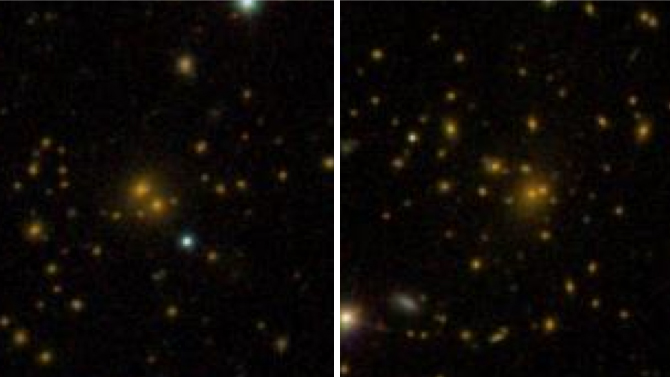
Researchers used a novel technique that takes advantage of the observation that the outer reaches of galaxy clusters, the largest structures in the universe held together by gravity, show similarity in their X-ray emission profiles and sizes. That is, more massive clusters are simply scaled up versions of less massive ones, similar to Russian dolls that nest inside one another.
The amount of matter in the Universe, which is dominated by the unseen substance called dark matter, and the properties of dark energy (what astronomers call cosmological parameters) affect the rate of expansion of the Universe and, therefore, how the distances to objects changes with time. If the cosmological parameters used are incorrect and a cluster is inferred to be traveling away faster than the correct value, then a cluster will appear to be larger and fainter due to this “Russian doll” property. If the cluster is inferred to be traveling away more slowly than the correct value, the cluster will be smaller and brighter than a cluster according to theory.
These latest results confirm earlier studies that the amount of dark energy has not changed over billions of years. They also support the idea that dark energy is best explained by the “cosmological constant,” which Einstein first proposed and is equivalent to the energy of empty space.
The galaxy clusters in this large sample ranged in distance from about 760 million to 8.7 billion light years from Earth, providing astronomers with information about the era where dark energy caused the once-decelerating expansion of the Universe to accelerate.
The X-ray emission in the outer parts of galaxy clusters is faint because the gas is diffuse there. To deal with this issue in this study, the X-ray signal from different clusters was added together. Regions near the centers of the clusters are excluded from the analysis because of large differences between the properties of different clusters caused by supermassive black hole outbursts, the cooling of gas and the formation of stars.
A paper describing these results by Andrea Morandi and Ming Sun (University of Alabama at Huntsville) appeared in the April 11th, 2016 issue of the Monthly Notices of the Royal Astronomical Society journal and is available online. NASA’s Marshall Space Flight Center in Huntsville, Alabama, manages the Chandra program for NASA’s Science Mission Directorate in Washington. The Smithsonian Astrophysical Observatory in Cambridge, Massachusetts, controls Chandra’s science and flight operations. Credits: X-ray: NASA/CXC/Univ. of Alabama/A. Morandi et al; Optical: SDSS, NASA/STScI
“In this sense, galaxy clusters are like Russian dolls, with smaller ones having a similar shape to the larger ones,” said Andrea Morandi of the University of Alabama in Huntsville, who led the study. “Knowing this lets us compare them and accurately determine their distances across billions of light years.”
By using these galaxy clusters as distance markers, astronomers can measure how quickly the universe was expanding at different times since the Big Bang. According to Einstein’s theory of general relativity, the rate of expansion is determined by the properties of dark energy plus the amount of matter in the universe, where the latter is mostly made up of unseen material called dark matter.
If the assumed cosmological parameters (e.g., the properties of dark energy or dark matter) are incorrect, then distant clusters will not appear to be similar, that is their sizes will be larger or smaller than expected. The cosmological parameters are then adjusted so that all of the different clusters, with different masses and different distances, appear to be similar. The process is akin to determining the unknown weight of an object by adding or subtracting known weights to a balance scale until the two sides balance.
These latest results confirm earlier studies that the properties of dark energy have not changed over billions of years. They also support the idea that dark energy is best explained by the “cosmological constant,” which Einstein first proposed and is equivalent to the energy of empty space.
“Although we’ve looked hard at other explanations,” said co-author Ming Sun, also of the University of Alabama in Huntsville, “it still appears that dark energy behaves just like Einstein’s cosmological constant.”
The researchers studied 320 galaxy clusters with distances from Earth that ranged from about 760 million light years to about 8.7 billion light years. This spans the era where dark energy caused the once-decelerating universe to accelerate, a discovery that shocked many astronomers when it was made almost two decades ago.
To determine more precise results than with the Chandra X-ray data alone, the researchers combined this data with information on the expansion rate of the universe from optical observations of supernovas, and work from Planck on the cosmic microwave background, the leftover radiation from the Big Bang.
“The nature of dark energy is one of the biggest mysteries in physics, so it’s crucial to invent new tools for studying its properties, since different methods can have very different assumptions, strengths and weaknesses,” said Morandi. “We think this new technique has the ability to provide a big leap forward in our understanding of dark energy.”
A paper describing these results appeared in the April 11 issue of the Monthly Notices of the Royal Astronomical Society journal. NASA’s Marshall Space Flight Center manages the Chandra program for NASA’s Science Mission Directorate. The Smithsonian Astrophysical Observatory in Cambridge, Massachusetts, controls Chandra’s science and flight operations.
For more Chandra images, multimedia and related materials, click here.
Earth’s New Lightning Capital Revealed
By Ryan Connelly
Earth has a new lightning capital, according to a recent study using observations from the Lightning Imaging Sensor onboard NASA’s Tropical Rainfall Measurement Mission.
Lake Maracaibo in Venezuela earned the top spot, receiving an average rate of about 233 flashes per square kilometer per year, according to the study. Researchers had previously identified Africa’s Congo Basin as the location of maximum lightning activity.
The research team constructed a very high-resolution data set derived from 16 years of space-based LIS observations to identify and rank lightning hotspots. They described their research in the Bulletin of the American Meteorological Society.
“We can now observe lightning flash rate density in very fine detail on a global scale,” said Richard Blakeslee, LIS project scientist at NASA’s Marshall Space Flight Center. “Better understanding of lightning activity around the world enables policy makers, government agencies and other stakeholders to make more informed decisions related to weather and climate.”
Blakeslee joined forces with lightning researchers at the University of São Paulo, the University of Maryland, the National Oceanic Atmospheric Administration and the University of Alabama in Huntsville to understand where and when most lightning occurs. Their findings will help forecasters and researchers better understand lightning and its connections to weather and other phenomena.
“Lake Maracaibo has a unique geography and climatology that is ideal for the development of thunderstorms,” said Dennis Buechler with the University of Alabama in Huntsville.
Buechler noted that Lake Maracaibo is not new to lightning researchers. Located in northwest Venezuela along part of the Andes Mountains, it is the largest lake in South America. Storms commonly form there at night as mountain breezes develop and converge over the warm, moist air over the lake. These unique conditions contribute to the development of persistent deep convection resulting in an average of 297 nocturnal thunderstorms per year, peaking in September.
Africa remains the continent with the most lightning hotspots, according to the study, home to six of the world’s top 10 sites for lightning activity. The majority of the hotspots were by Lake Victoria and other lakes along the East African Rift Valley, which have a similar geography to Lake Maracaibo.
The study also confirmed earlier findings that concentrated lightning activity tends to happen over land and reduced lightning activity over oceans and that continental lightning peaks generally in the afternoon.
“Our research using LIS observations in new ways is a prime example of how NASA partners with scientists all over the world to better understand and appreciate our home planet,” said Blakeslee.
Developed at Marshall, LIS detects the distribution and variability of total lightning — cloud-to-cloud, intracloud and cloud to ground — that occurs in the tropical regions of the globe. LIS uses a specialized, high-speed imaging system to look for changes in the optical output caused by lightning in the tops of clouds. By analyzing a narrow wavelength band around 777 nanometers — which is in the near-infrared region of the spectrum — the sensors can spot brief lightning flashes even under bright daytime conditions that swamp out the small lightning signal.
The team at Marshall that created LIS in the mid-1990s built a spare — and now that second unit is stepping up to contribute, as well. The sensor is scheduled to launch on a Space Exploration Technologies rocket to the International Space Station in September 2016.
To learn more about NASA Earth science, click here.
Connelly, a NASA intern, is supporting the Office of Strategic Analysis & Communications.
Army Cleanup of World War II Munitions Buried at Redstone Arsenal Begins with NASA
By Kenneth Kesner
A long-term Army environmental remediation project to remove munitions that were demilitarized and buried at Redstone Arsenal after World War II is beginning in the West Test Area of NASA’s Marshall Space Flight Center.
The test area is the first of 17 arsenal sites to be addressed in the 20-to-30 year, $511 million cleanup program. “The area was given priority because of its importance to Marshall’s mission and development of NASA’s Space Launch System,” said Jason Watson, site manager at the Redstone Arsenal Directorate of Public Works, Installation Restoration Branch. Structural Test Stands 4697 and 4693 are under construction there for testing of the SLS core stage’s huge liquid oxygen and liquid hydrogen fuel tanks and hardware to begin in 2017.
“Our teams will work at night and we don’t expect the operations to significantly affect Marshall’s construction or other activities,” Watson said. “We are working at this site now to reduce the impact on the schedule of tests for NASA’s new rocket. And we want to provide the cleanest environment possible for our Team Redstone partners as they further the nation’s mission of space exploration.”
Employees have worked safely in the area for decades. The buried material is not considered a health hazard because of land use controls that prevent contact by workers. Watson said the aim of the Army’s long-planned remediation program is to remove the sources of contamination from the environment and reduce the risk of future exposure.
Through records, historical research, sampling and previous cleanup efforts, the Army has put together a detailed picture of what was buried in approximately six miles of trenches at Redstone Arsenal after World War II. They include U.S. mortars and projectiles as well as ordnance brought from Great Britain, Germany and Japan for disposal.
Detailed below-the-ground assessments have already been done by Army and Corps of Engineers-contracted experts using ground penetrating radar and other non-intrusive methods to locate and characterize buried material. Flags have been placed to mark locations for examination and excavation. A mobile command post has been set up on Dodd Road for the crews to stage daily operations and supplies.
It is extremely unlikely the teams will come into contact with an item that is unsafe. In 20 years of Army experience at projects like this across the country, an onsite detonation of a liquid-filled item has rarely been required. Exclusion zones or perimeters have been established to protect the public from an unintentional detonation or release of a chemical agent. Some items once contained liquid chemical agents, but all are expected to have been emptied and defused before burial. The Army is preparing for any contingency, with personnel decontamination stations staged and ready.
Training is underway for operations in the West Test Area with digging expected to begin in early June and run through July. Additional work may be required later. Crews will work from 7 p.m. to 5:30 a.m. Sunday through Thursday.
Marshall is adjusting work hours in the area to begin no earlier than 6 a.m. and to conclude no later than 6 p.m. on those days. Also, Marshall will announce the start and end of remediation operations each day on the Emergency Warning System in buildings and on speakers in the test area.
If the crews find something unexpected that poses a potential risk or will require special teams to be brought in from elsewhere for safe removal, it’s possible they could not finish by 5:30 a.m. or the start of the Marshall workday, said Amy Keith, project manager in Marshall’s Environmental Engineering and Occupational Health Office. In that case, NASA employees and contractors who work in and near West and East Test Areas, including in Building 4666 on Dodd Road, will be notified that the area is closed and to divert to alternate work sites. Marshall Emergency Operations will use the NIXLE alert system and will work with the Public and Employee Communications Office for “This Just In” emails and other messaging about area access.
“Employee safety is, as always, our top priority,” Keith said. “While there is little cause for concern, we want everyone to be informed and aware of this important Army project for the long-term health of our workplace and environment.”
For more information, visit the Marshall Environmental Engineering and Occupational Health Office pages on ExplorNet.
Kenneth Kesner, an ASRC Federal/Analytical Services employee, supports the Office of Strategic Analysis & Communications.
Two Marshall Teams Receive NASA ‘Lean Forward; Fail Smart’ Awards
A pair of teams from NASA’s Marshall Space Flight Center recently received the agency’s “Lean Forward; Fail Smart” awards in this year’s NASA Innovation Awards.
Established by NASA’s Office of Human Capital Management, the awards are designed to recognize individuals who exemplify the spirit of innovative behavior.
The Lean Forward; Fail Smart award encourages, recognizes and celebrates the spirit that propels individuals to take the risk to innovate — unfortunately failing to reach the desired outcome, but learning from the attempt. These individuals exhibit the courage to depart from usual practice, have a determined will to succeed, demonstrate the ability to distinguish between productive and unproductive failures, and consistently share knowledge with others.
Marshall’s “Peregrine Sustainer Motor” and “Ferro Bearing” teams swept both NASA Lean Forward; Fail Smart awards, bringing home half the 2016 NASA Innovation Awards.
Peregrine Sustainer Motor Team
Tasked with developing a sustainer rocket motor for NASA’s Sounding Rocket Program, Marshall engineers Phillip Franklin, Dale Jackson and Lisa Tunstill faced a very aggressive schedule. Typically, development and qualification plans for solid rocket motors take up to four years. They would attempt to complete the task in half the time — in just two years.
To meet this timeframe, the team developed a forward-leaning risk posture and condensed the project’s test phase to only one ground test, followed quickly by test flights. Similar projects require multiple development and ground tests.
During the team’s static test, there was a problem, however. After seven seconds of promising results, the motor’s thrust dropped. The aft closure had failed and a burn through had developed.
“The static test was a great disappointment, but the mettle of a team is made not by how it’s knocked down but how it stands back up,” said Franklin. “This team stood up quickly and in true NASA fashion we had lessons learned and were able to put in corrective actions.”
Working with NASA’s Wallops Flight Facility and Goddard Space Flight Center, the team immediately began investigating the failure. They identified the root cause and developed solutions to retrofit the remaining assets for further testing.
Though the test was a disappointment, the team proved and met many of the program objectives, and learning from the failure has helped improve and grow a streamlined process for developing propulsion systems.
Ferro Bearing Team
Last spring, as part of the first Marshall Hackathon, Marshall’s Space Systems Department issued a call for ideas to solve a problem faced by the Flat Floor Facility. The Flat Floor — the world’s largest air-bearing floor — uses air bearings to generate lift for testing the guidance, navigation and control systems of spacecraft. With air hoses and bearings too large for many of the low-mass spacecraft currently being developed to move freely, an alternative was needed.
Marshall engineers Alex Few, Judith Gregory and Paul Tatum offered a solution using ferro-fluid — a liquid that is attracted to magnetic fields — as the bearing medium instead of air. Held in place by a magnet, the ferro-fluid offers little friction as it glides across a smooth surface.
The problem with ferro-fluid is that it’s messy. As it tracks across a surface, it leaves streaks of the fluid behind. To remedy this, the team paired with Anish Tuteja, an associate professor of Materials Science and Engineering at the University of Michigan. Tuteja provided the team with samples of omniphobic-coated materials, or materials that repel fluid.
The first tests of the omniphobic-coated materials failed. The cloth-like materials did not respond well to the pressure applied and absorbed the ferro-fluid. So Tuteja and his students worked with the Ferro-bearing team to develop a new, non-compressible coating. Though limited, early testing is promising.
With the freedom to test an innovative idea, some thought may never work, the Ferro Bearing team used limited resources — less than $700 — to develop the process in less than two weeks. Early failure in testing led to solutions and refinements to the process, creating a cleaner work environment and developing a new relationship with academia.
The NASA Innovation Awards are solicited annually by NASA@Work. To learn more about the NASA Innovation Awards and the Marshall recipients, click here.
This Week in NASA History: LAGEOS-1 Satellite Launches — May 4, 1976
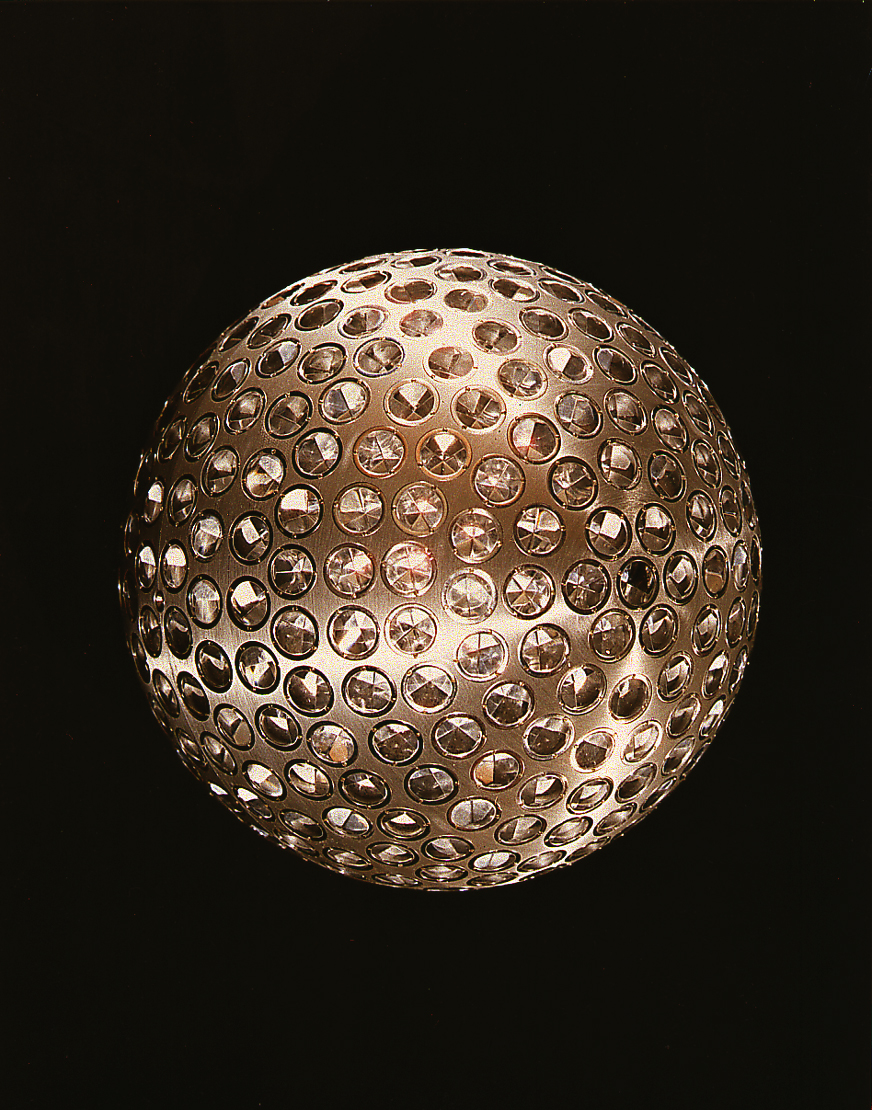
This week in 1976, NASA launched the Laser Geodynamics Satellite, LAGEOS-1. The 2-foot-diameter, 900-pound satellite orbited Earth from pole to pole and measured the movements of Earth’s surface relative to earthquakes, continental drift, and other geophysical phenomena. LAGEOS-1, the first spacecraft dedicated exclusively to high-precision laser ranging, provided the first opportunity to acquire laser-ranging data that were not degraded by errors originating in the satellite orbit or satellite array. The mirrored surface of the satellite precisely reflected laser beams from ground stations for accurate ranging measurements. NASA’s Marshall Space Flight Center developed and built the satellite. Many Marshall scientists and researchers work everyday to develop a scientific understanding of Earth’s system and its response to natural or human-induced changes, and to improve prediction of climate, weather, and natural hazards. The NASA History Program documents and preserves NASA’s remarkable history through a variety of products — photos, press kits, press releases, mission transcripts and administrators’ speeches. For more pictures like this one and to connect to NASA’s history, visit the History Program’s Web page. (NASA)
Marshall Team’s Research of Zika Virus Featured on ‘This Week @NASA’
Risk assessment research of the Zika virus, conducted in part by scientists at NASA’s Marshall Space Flight Center, is featured in the latest edition of “This Week @NASA,” a weekly video program broadcast nationwide on NASA-TV and posted online.
NASA is assisting public health officials, scientists and communities to better understand the Zika virus in efforts to limit the spread of the disease it causes. Partnering with scientists and researchers from the National Center for Atmospheric Research in Boulder, Colorado, and other institutions, Marshall scientists worked to produce a map that can help forecast the potential spread of the Zika virus in the United States.
The research team looked at several key factors — including temperature, rainfall and socioeconomic factors — that contribute to the spread of the virus, to understand where and when a potential outbreak may occur. To learn more about Marshall’s Zika research and the risk assessment-mapping project, click here.
Over the past three decades, NASA has partnered with various world health organizations to use remotely sensed observations to help develop predictive models for the spread of vector-borne diseases such as malaria, plague, yellow fever, West Nile virus, lyme disease, Rift Valley fever and onchocerciasis, or river blindness.
View this and previous episodes at “This Week @NASA” or at https://www.youtube.com/user/NASAtelevision.
Obituaries
Dave M. McGlathery, 80, of Huntsville, died April 28. He retired from the Marshall Center in 2008 as an aerospace engineer. He is survived by his wife, LaVerta McGlathery.
Mary L. Sparks, 71, of Huntsville, died April 30. She retired from the Marshall Center in 1997 as a program analyst.

























